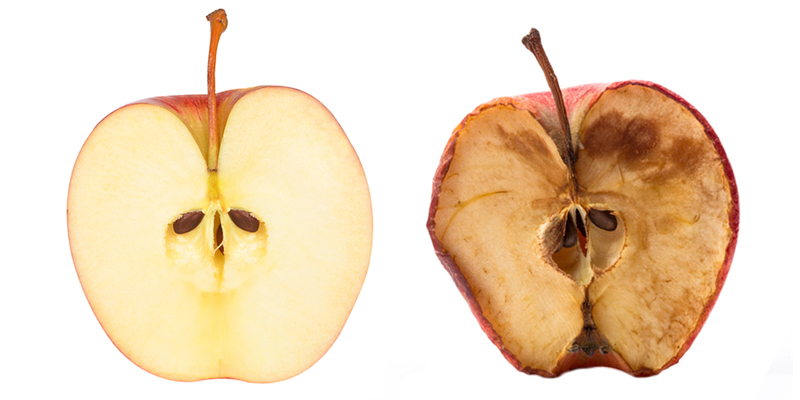What’s the biggest, baddest, wine flaw of them all? Say hello to oxidation, your wine’s worst nightmare. But isn’t oxygen good for wine, you ask? What about everything we’ve learned about introducing oxygen to the glass (cue pretentious over-swirling of the wine) to bring out all of its deepest, darkest aromas? How can something we’ve been taught is so good for wine be the contributor to the biggest wine flaw of them all? Like anything else, too much of a good thing can lead to a demise — yes, even for your favorite bottle. We’re breaking down what exactly oxidation is and just how much is too much.
It’s true — wine does need oxygen. The whole “let the wine breathe” phrase isn’t total nonsense; introducing oxygen to a newly opened bottle of wine or a freshly poured glass (hence, why we decant and swirl) is entirely beneficial. The moment that wine encounters oxygen, it begins to break down, or “open up,” as many people say. Oxygen allows the aromas in wine to become more present, making it easier to identify what exactly you’re smelling. Introduction of oxygen also softens the mouthfeel of wine; this is due to the breaking down of tannins, the cause of that harsh, dry sensation you may feel along your cheeks and tongue. This practice is extremely beneficial in young reds, whose bright acidity and gripping tannins can seem austere and unpleasant at first.
However, too much oxygen can lead to oxidation, the degradation of wine due to an abundance of oxygen. This can happen during the actual winemaking process or even after the wine has been bottled. Basically, all oxygen needs is a simple catalyst for the reaction to occur. Anthocyanins and phenols, two components of wine, are very susceptible to oxidation. When oxidation takes place, the wine’s pigmentation will decrease and loss of aromas and flavors will occur. Think of an apple that’s been sliced and left out too long; the abundance of oxygen causes the flesh to brown, the aromas to dissipate and the flavors to disappear. Same thing goes for oxidation in wine.
How do I know if my wine is oxidized? Well, if the juice is slightly brown in color, with zero aromas of fruit and a lackluster palate, potentially displaying notes of vinegar, then yep, sounds like you got yourself a fully oxidized wine. Unfortunately, oxidation cannot be reversed and the wine will be ruined. However, there are certain winemaking practices that encourage oxidation, like the methods used to produce Sherry and Madeira, which give them their nutty, bruised-apple flavors. Compare your oxidized wine against the same bottle, unoxidized, and a bottle of Sherry, for a full-spectrum experience of oxygen presence in wine.

